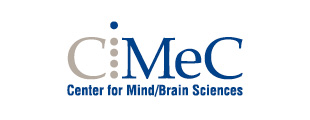Overview | Research directions | Members | Publications | Grants | Ongoing Collaborations
Overview
Our research examines the organization of the human motor system and the role of fronto-parietal motor networks in cognitive functions. Two main ideas have guided our research experience to this point. We are convinced that cognition can be fully understood only by considering its aim, i.e. producing intelligent and adaptive behaviour. Moreover, the only way to understand the neural substrates of higher cognitive functions is through a multi-method approach (behaviour, kinematics, EMG, fMRI, MEG/EEG, TMS) exploiting new advanced analytical methods (MVPA, connectivity).
Research directions
- Action Representations within Dorsal and Ventral Streams - This line of research focuses on understanding how the actions we perform in everyday life are represented in the brain. The idea is to map the contributions of motor networks and of the ventral stream in motor control. Besides, we focus on understanding where actions are represented at a more “abstract” level across and within different modalities (observed, imagined, planned and/or executed).
- Action and Intention Understanding - Our idea is to investigate how our brain can understand the actions and intentions of other people. Our working hypothesis is that this might be through the interplay among different cortical networks. Our aim is to assess the specific contributions of the action observation network, of the mentalizing system and of conceptual regions in action and intention understanding.
- Role of V1 in Action Planning, Visual Imagery and Working Memory - Recent experimental evidence highlighted the role of V1 in several cognitive processes (Roelfsema & de Lange 2016). This line of research focuses on testing what type of information is represented within V1 and the specific top-down modulations exerting V1 “reactivation” in different experimental tasks.
- Neural Substrates underlying the beneficial Effects of Physical Activity in Parkinson’s Disease - The main aim of the project is to evaluate the neural modifications induced by physical activity in Parkinson’s Disease. The project will explore exercise-induced effects on brain structure, function and cortical activity, and to test if their alterations correlate with improvements of motor/non-motor symptoms.
Members
- Luca Turella, Principal Investigator
- Enrica Pierotti, PhD student
- Chiara Speranza, Master’s Student
Publications
For a complete list see Luca Turella personal page
Grants
-
“COMPArative charACTterization of the parietal lobe: a multimodal approach” (funded under the MUR PRIN 2022). Principal Investigator of local Unit.
The project is carried on with Dr. Luca Fornia (PI of the project) at the University of Milan UNIMI and Dr. Luciano Simone (PI of local unit) at the University of Parma.
Our work is also possible thanks to the contribution of MIUR (FIRB 2013), European Research Council (ERC), the University of Trento, CIMeC, Provincia Autonoma di Trento, Comune di Rovereto, Fondazione Caritro.
Ongoing Collaborations
- Merim Bilalic, Northumbria University Newcastle, UK
- Francesca Garbarini, University of Torino, Italy
- Emiliano Ricciardi, Istituto Alti Studi Lucca (IMT), Italy
- Luigi Tamè, Lecturer at Kent University.

